Kimberley fossil tracks are Australia's 'Jurassic Park'
- Published
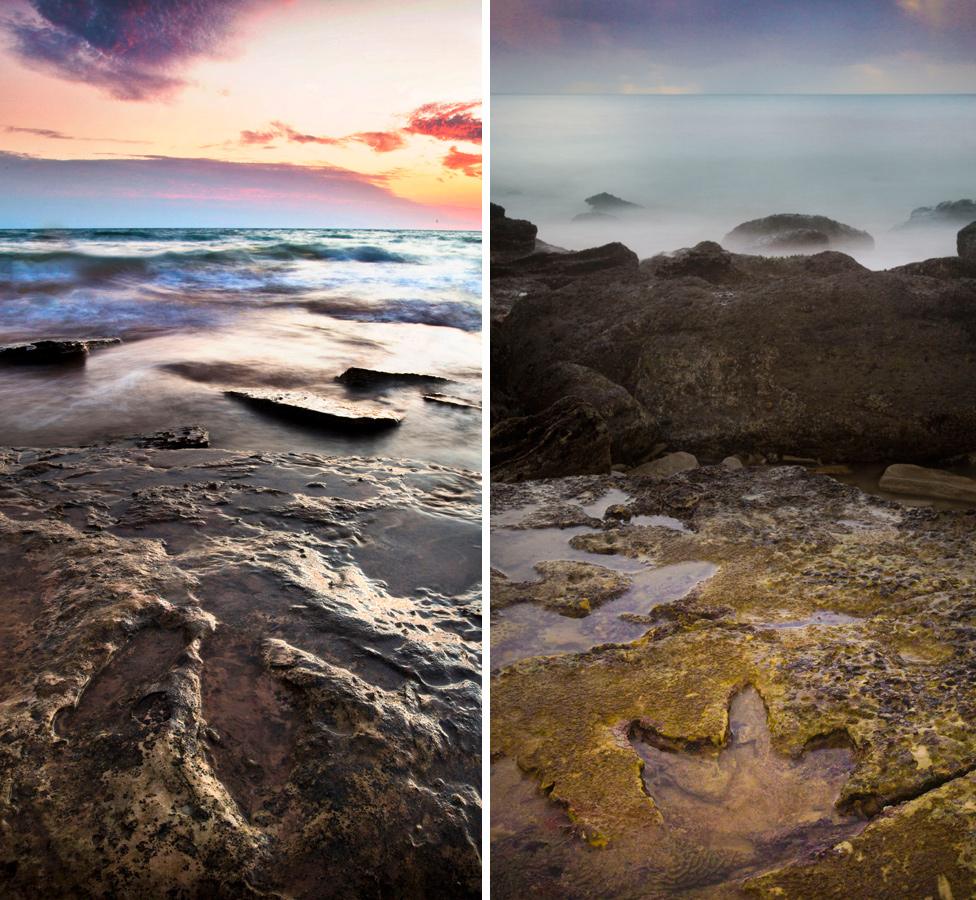
The trackways are part of the oral history of the local indigenous people
Scientists have described a remarkable collection of dinosaur tracks on beaches in the Kimberley region of Western Australia.
More than 20 different types of fossil footmarks have been captured in sandstone rock.
Some are over 1.5m in size, recording the movement of sauropods - the giant beasts with long necks and tails.
The trackways, many only visible at low tide, were "globally unparalleled", claimed the lead scientist involved.
Steve Salisbury called the 25km-long coastline collection Australia's own "Jurassic Park", external.
He was making a reference to the diversity of dinosaurs in the Hollywood movie of that title. The age of the fossils at Kimberley actually fall in the Cretaceous.
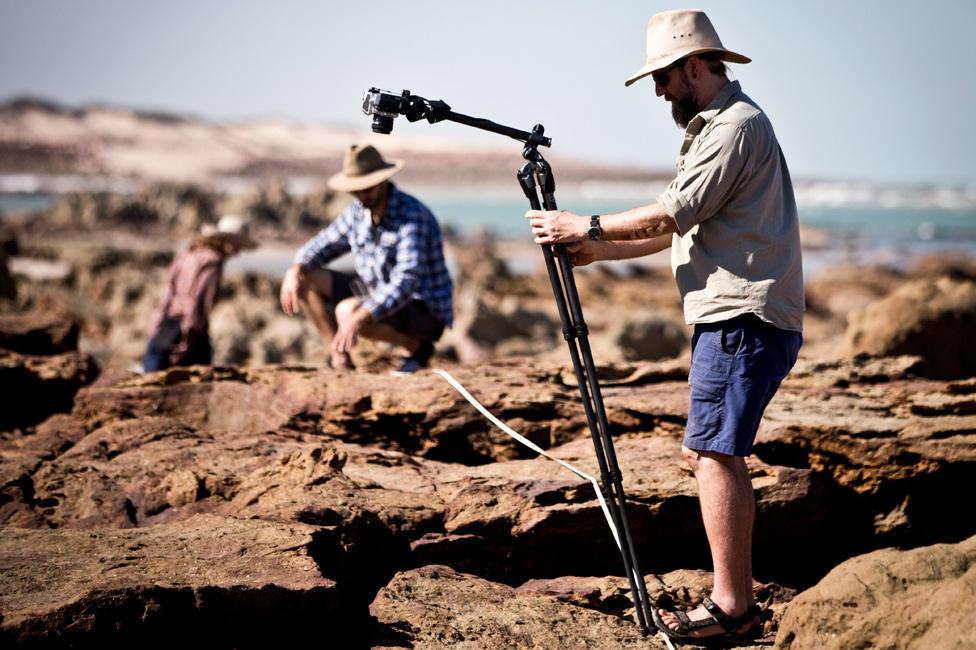
Dr Salisbury and his colleagues had to do much of their work at low tide
"This is the most diverse dinosaur track fauna we've ever recorded," he told BBC News.
"In this time slice (127 and 140 million years ago) in Australia, we've got no other record - there's virtually no other fossils from any part of the continent. This is only window, and what we see is truly amazing.
"Twenty-one different types. There are about six different types of tracks for meat-eating dinosaurs; about the same number for sauropod dinosaurs; about four different types of ornithopod dinosaur tracks - so, two-legged plant-eaters - and really exciting, I think, are six types of armoured dinosaur tracks, including stegosaurs, which we've never seen before in Australia."

The biggest sauropod prints are over a metre long
The researcher put together a team from Queensland University and James Cook University to investigate the footprints after being invited to do so by area's Goolarabooloo Traditional Custodians.
Back in 2008, the aboriginal people of Western Australia's Kimberley region had been concerned about the possible development of a liquid natural gas facility.
They asked Dr Salisbury to document the beach prints as part of their campaign of opposition.
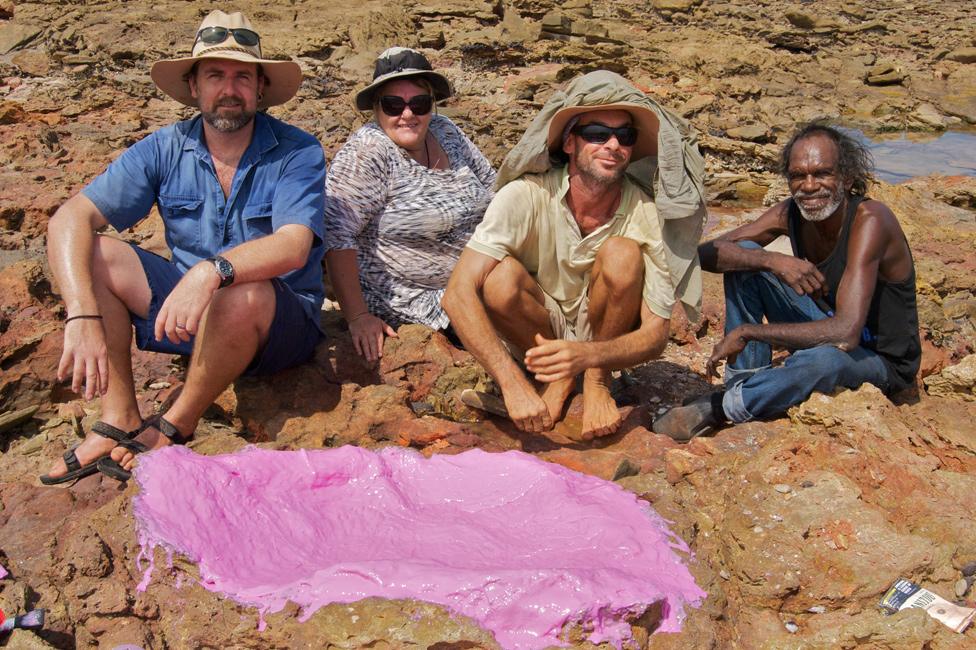
Silicone peels were taken of some prints to make casts for museum displays
The scientist said the indigenous people had long referred to the markings in their oral history - probably for thousands of years.
"They form part of a song cycle - they relate to a creation mythology, and specifically the tracks show the journey of a creation being called Marala - the emu man. "Wherever he went he left behind three-toed tracks that now we recognise as the tracks of meat-eating dinosaurs."
Dr Salisbury's team spent more than 400 hours detailing the prints between 2011 to 2016.

Australian first: Stegosaurs had angular bony plates protruding from their backs
Thousands of tracks are recorded at 48 discrete sites centred on Walmadany (James Price Point) on the Dampier Peninsula.
The scientists examined and measured the depressions using three-dimensional photogrammetry, which builds accurate models of the subjects under investigation by taking pictures from various angles.
For a good many, they took silicone peels from which to make casts that could then be shown in museums.
Most of Australia's dinosaur fossils come from the eastern side of the continent, and are between 115 and 90 million years old.
The research has been published as the 2016 Memoir of the Society of Vertebrate Paleontology, external.
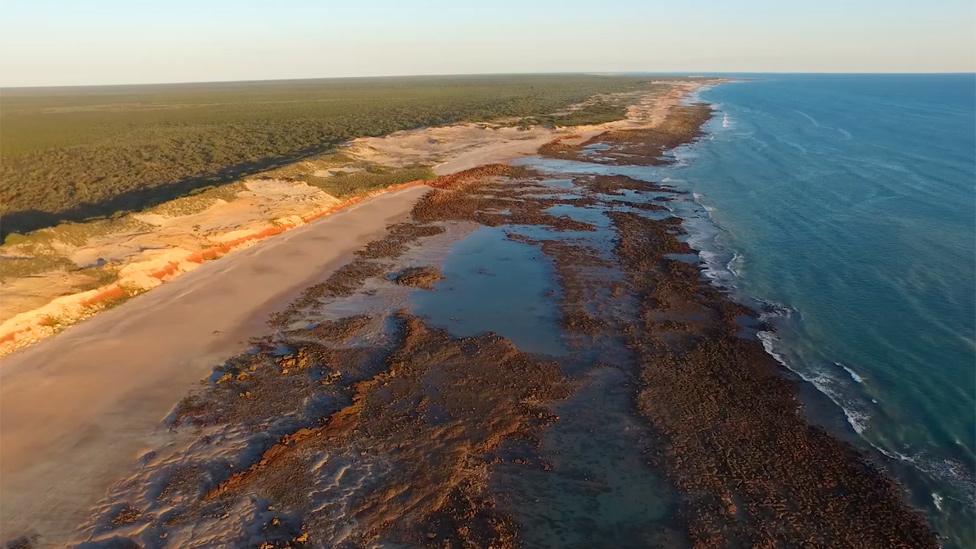
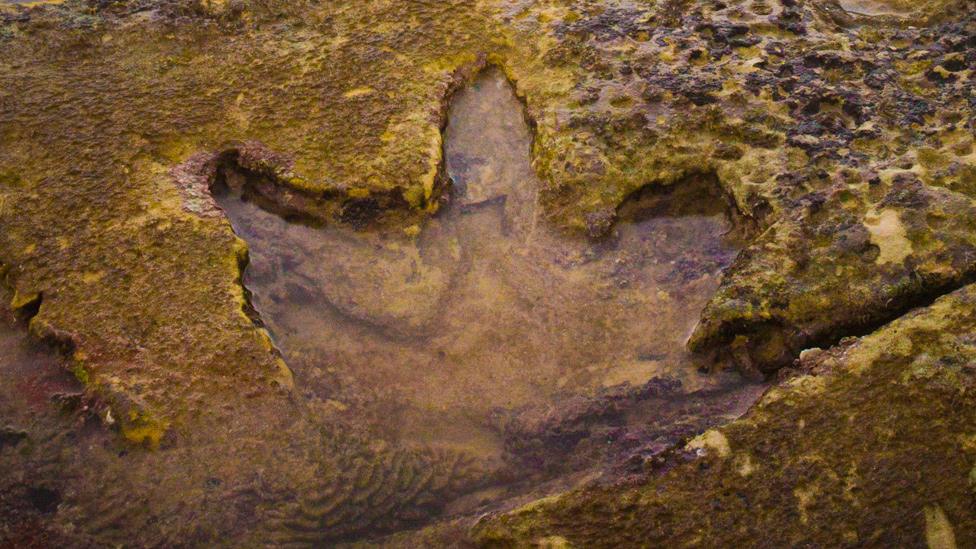
Jonathan.Amos-INTERNET@bbc.co.uk, external and follow me on Twitter: @BBCAmos, external